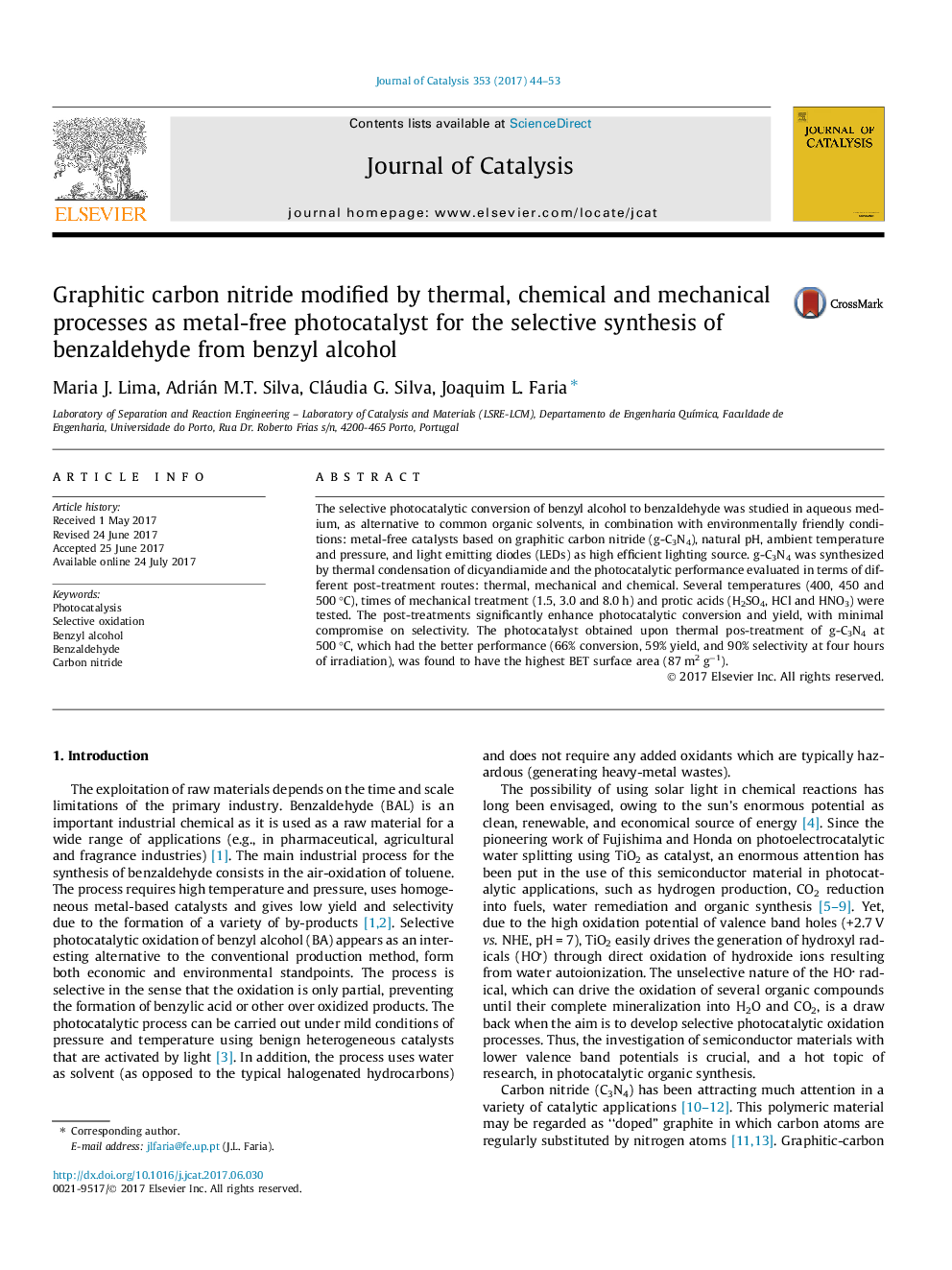| Article ID | Journal | Published Year | Pages | File Type |
|---|---|---|---|---|
| 6455546 | Journal of Catalysis | 2017 | 10 Pages |
â¢Photocatalytic oxidation of benzyl alcohol in water by g-C3N4 is selective to benzaldehyde.â¢Mechanical and chemical post-treatments widen-up g-C3N4 photocatalyst band-gap.â¢Thermal post-treatments of bulk g-C3N4 significantly increase benzaldehyde yield.â¢Benzaldehyde production by photocatalysis with g-C3N4 is clean, safe and efficient.
The selective photocatalytic conversion of benzyl alcohol to benzaldehyde was studied in aqueous medium, as alternative to common organic solvents, in combination with environmentally friendly conditions: metal-free catalysts based on graphitic carbon nitride (g-C3N4), natural pH, ambient temperature and pressure, and light emitting diodes (LEDs) as high efficient lighting source. g-C3N4 was synthesized by thermal condensation of dicyandiamide and the photocatalytic performance evaluated in terms of different post-treatment routes: thermal, mechanical and chemical. Several temperatures (400, 450 and 500 °C), times of mechanical treatment (1.5, 3.0 and 8.0 h) and protic acids (H2SO4, HCl and HNO3) were tested. The post-treatments significantly enhance photocatalytic conversion and yield, with minimal compromise on selectivity. The photocatalyst obtained upon thermal pos-treatment of g-C3N4 at 500 °C, which had the better performance (66% conversion, 59% yield, and 90% selectivity at four hours of irradiation), was found to have the highest BET surface area (87 m2 gâ1).
Graphical abstractDownload high-res image (84KB)Download full-size image
